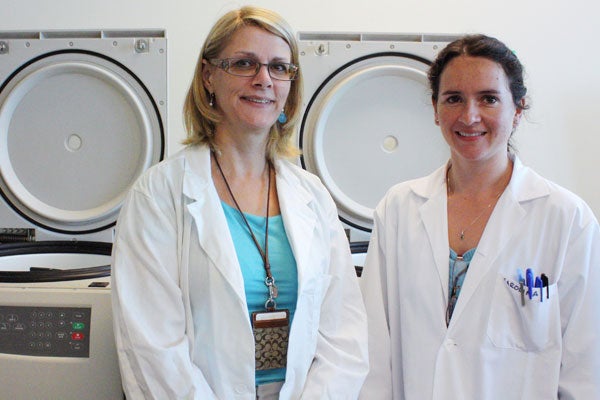
U of T professors track drug-resistant tuberculosis
Published: June 13, 2013
It's the second leading cause of death by an infectious agent worldwide. Now, University of Toronto Professor Frances Jamieson is tackling drug-resistant tuberculosis with a new, lab-based surveillance system that can track the spread of the disease in real-time.
“85 per cent of our cases in Ontario are foreign-born, so this system will allow us to have a global impact," says Jamieson. "We can identify and track existing and emerging strains of TB and this powerful technology can be applied to any type of infectious disease.”
As soon as public health officials identify an outbreak of tuberculosis (TB), the urgent questions begin. How far has it spread? Are the cases related? Who else in the community or in the “cluster” requires treatment? Is the strain drug-resistant? In crisis situations communication is critical; patients require quick and accurate diagnoses and treatment to prevent the spread of disease.
“TB is a nasty disease," says Jamieson. "A healthy person can die from it and it’s not a nice treatment."
Jamieson, a professor at U of T’s Department of Laboratory Medicine and Pathobiology (LMP), and a medical microbiologist with Public Health Ontario, is leading the way in tracking this potentially deadly disease with a powerful new Geographic Information System (GIS), known as Ontario Universal Typing – Tuberculosis (OUT-TB) Web.
This sophisticated system combines patient data and demographics with the genotype or “fingerprint” of each TB strain. It provides health authorities with a unique real-time geographical view of tuberculosis cases and clusters and allows them to track potential outbreaks. More specifically, it can track whether cases are linked genotypically, geographically and epidemiologically and whether a case involves drug-resistant strain(s).
Not just applicable to TB, this secure web-based system could be used to monitor a host of pathogens and diseases from E. coli to meningitis to SARS-like outbreaks across the country.
Working at the Public Health Ontario laboratory, the largest TB laboratory in North America, Jamieson recognized the need for such a system.
“We really are leading the way with OUT-TB," Jamieson says. "We can combine pre-existing patient information such as location and other demographics with our laboratory results.
"We tell the public health units what strain type of TB they have, what drug treatment is appropriate and we track whether the strain is drug-resistant.”
The World Health Organization reports that in 2011, 8.7 million people fell ill with TB and 1.4 million people died. While overall rates have been declining, health authorities are concerned about the threat of multidrug-resistant tuberculosis (MDR-TB), which is resistant to two of the most effective first-line drugs. Even more concerning is the threat of extensively drug-resistant tuberculosis (XDR-TB), which is resistant to these first-line drugs, at least one of the injectable second-line drugs and a fluoroquinolone.
"You don’t get treated for just a couple of weeks or a few days, you get treated for six to nine months, and that’s only if it’s fully susceptible to all the first-line drugs," says Jamieson. "If you get MDR-TB, you could be treated for two years, you’re on multiple drugs, you may need to receive intravenous drugs and you may need to be hospitalized,” says Prof. Jamieson.
Making the situation even more complicated is that even when a treatment is supposed to work, as identified by laboratory results, it sometimes fails. To address this challenge, Jamieson is working closely with LMP Professor Carolina Mehaffy, a TB and mycobacteriology scientist at Public Health Ontario, to understand the mechanisms of the disease.
“There are some patients who may not respond as well to treatment so we want to see if there are other mechanisms of drug resistance," Mehaffy says. "Ultimately, we can help the clinical side because we can develop tests that will identify resistant strains. In the broader picture we can help develop more effective drugs.”
Combining this lab information with the new geographical tracking system will provide health officials with a broad, accurate real-time view of what’s happening provincially, nationally and internationally.
Katie Babcock is a writer with the Faculty of Medicine at the University of Toronto



